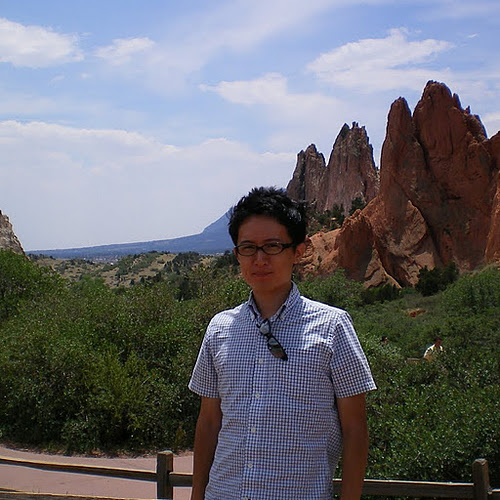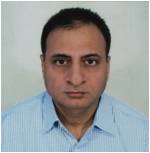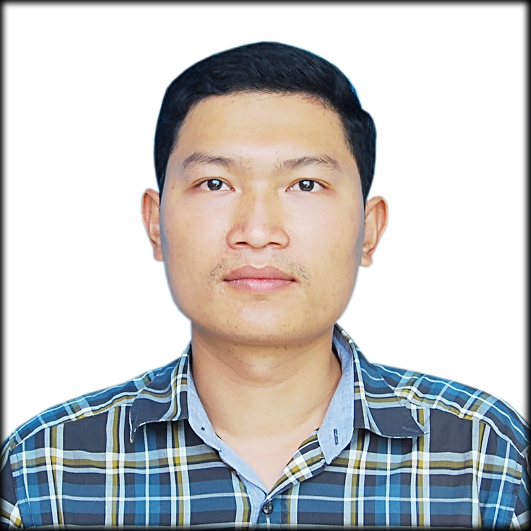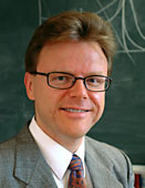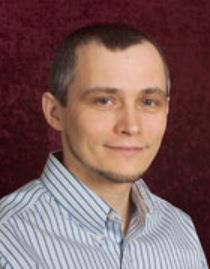|
|
|
|
Postdoc programs open for application
For FY 2015, two postdoctral program at RIKEN are now open for application. One is Special Postdoctoral Researcher (SPDR) , for those have either Japanese citizenship or permanent residency, or a doctoral degree from Japanese graduate schools:
http://www.riken.jp/en/careers/programs/spdr/career2015/
The other is Foreign Postdoctoral Researchers (FPR) for non-Japanese citizens:
http://www.riken.jp/en/careers/programs/fpr/career2015/
Please draw your younger colleagues' attention to the appropriate programs mentioned above.
|
|
|
Upcoming Events
|
|
iTHES-YITP Joint Workshop
March 10 - 23, 2014, Yukawa Institute, Kyoto University
"International Molecule-type Workshop on New correlations in exotic nuclei and advances of theoretical models"
http://www.yukawa.kyoto-u.ac.jp/contents/seminar/detail.php?SNUM=51665
iTHES Seminars on March 14 and 28
Speaker: Prof. Bernold Fiedler (Mathematics Institute, Free University of Berlin)
Talk 1
Date: 13:30-, March 14, 2014
Place: S311, Bioscience Building, RIKEN
Title: Reaction, diffusion, and advection in one space dimension - an introduction
Talk 2
Date: 13:30-, March 28, 2014
Place: S311, Bioscience Building, RIKEN
Title: Reaction and diffusion in several space dimensions - an invitation
iTHES-RIBF joint seminar
March 25 (Tues), 2014, 15:30-
Large conf. room, RIBF building 2F
Prof. B. K. Agawal (Saha Institute of Nuclear Physics, Kolkata)
"Nuclear symmetry energy from nuclear observables"
|
|
|
Event Report
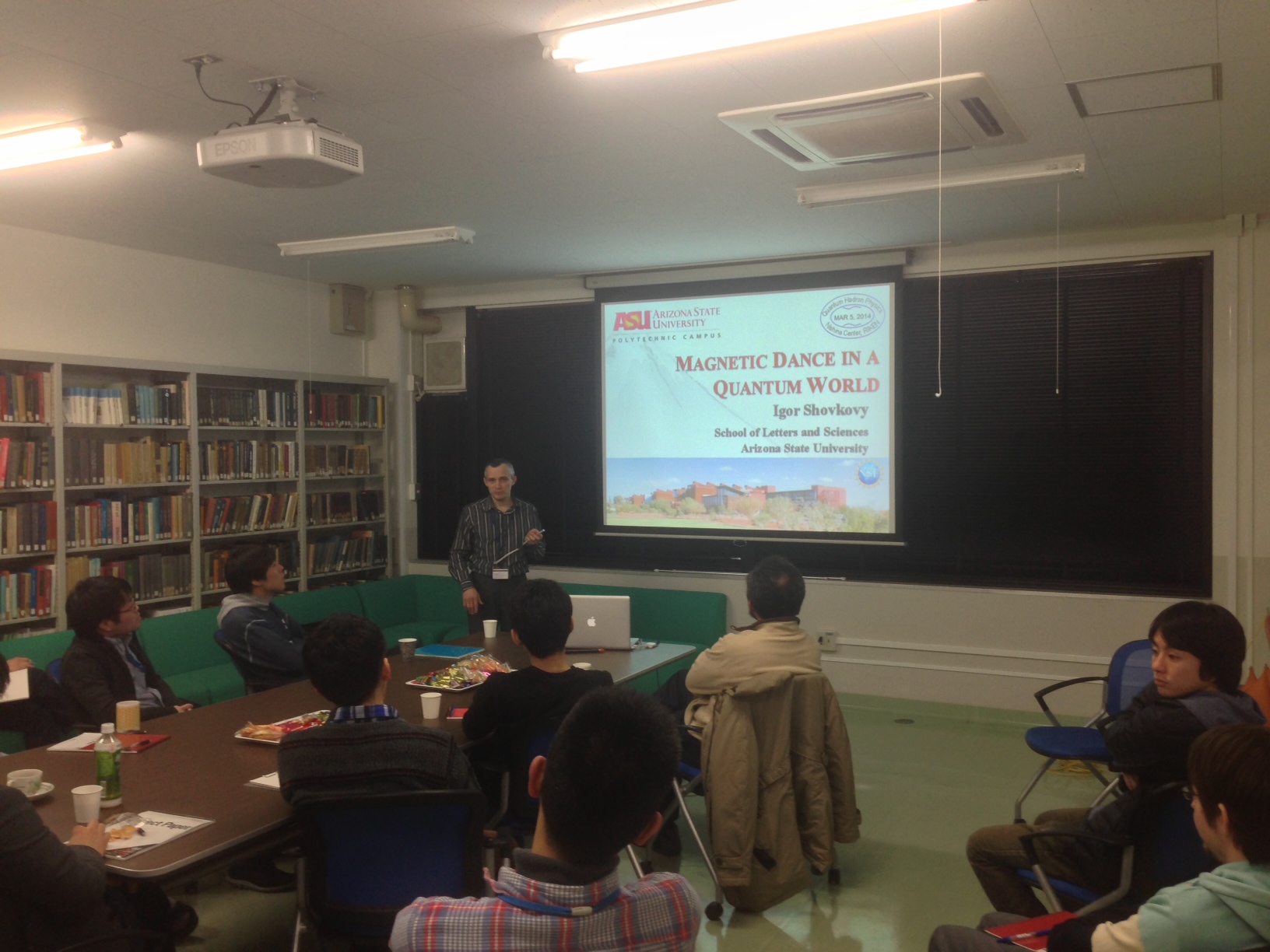 |
|
| |
iTHES seminar by Prof. Igor Shovkovy (Arizona State Univ.) was
held in the afternoon of March 5, 2014. With the title
"Magnetic Dance in the Quantum World", he started his talk with a very nice
overview on the magnetic field applied to the "relativistic" matter
realized in dense matter in neutron stars, hot matter in heavy-ion
collisions,
and the electrons in graphene. After the introduction, he talked about
the idea of
the "Magnetic Catalysis" coined by him and his collaborators
in 1994 and its applications to QED and to graphene.
Then he discussed the recent hot topics developed in high energy physics,
the chiral magnetic effect and the chiral separation effect,
and their applications to Dirac and Weyl semimetals in material science.
Almost 30 people inside and outside from RIKEN have attended his talk,
and we had heated discussions during and after his 2-hour talk.
The participants were fascinated by the fact that
relativistic fermions under the magnetic field appear everywhere, from
high energy physics to condensed matter physics.
His slides can be downloaded from
http://shovkovy.faculty.asu.edu/talks/2014_03_05_RIKEN.pdf
|
|
|
Person of the Week
Yoshitomo Kamiya
Self-introduction
Hi colleagues! I am Yoshitomo Kamiya, a newly coming iTHES postdoc working on condensed matter theory. I got my Ph. D. in 2011 in University of Tokyo. After that I spent 3 years in Los Alamos National Laboratory as a postdoc (2011-2014). During these years I focused on the study of frustrated quantum/classical magnets. As writing this on the plane flying back to Tokyo, I’m very excited about the idea of entering the wonderful new research environment.
While you might be already familiar with it, "frustration" refers to a situation where interactions compete with each other, typically preventing conventional thermodynamic orderings. As a theorist, this is a fascinating opportunity to seek for novel states of matter, and some of them could be also useful for technological applications (e.g., skyrmion crystals for spintronics). The main challenge to us is that currently we are not aware of a generic method for a frustrated quantum system by which one can study any problem he/she wants to solve in d > 1 dimensions; brute force does not work beyond a certain point. Thus, it is extremely nice if we could develop a new theoretical approach. One thing that I’m planning to do in RIKEN is in such a direction, where my target is the tensor-network method (originally proposed from quantum information community); the other thing I’m interested in now is the kernel polynomial method, which should be useful for a classical model coupled to itinerant electrons. I will also continue collaborations with experimentalists, which often gives us an insight about a new research direction.
|
|
|
Visitors
Prof. Bijay Kumar Agrawal
(Saha Institute of Nuclear Physics)
Pairing reentrance in hot rotating nuclei
Mar. 15 - 31,2014 room 159 (1st floor, main building)
Dr. Tran Viet Nhan Hao
(Tan Tao University)
Nuclear Physics, Computational Physics
Mar 15 - 30, 2014 room 159, (1st floor, main building)
Prof. Lembit Sihver
(Chalmers University of Technology, SWEDEN)
Nuclear Science and Engineering
Jan.20th - March 20th, 2014
room 302 (3rd floor, RIBF building)
Prof. Igor Shovkovy
(Arizona State University)
physics of graphene, quantum field theory,
dense matter in nuclear/particle physics.
http://shovkovy.faculty.asu.edu/
March 2 - March 15, 2014
room 433 (4th floor, main research building)
Prof. Gordon Baym
(Univ. Illinois at Urbana-Champaign)
cold atom physics, condensed matter physics,
dense matter and neutron stars
http://physics.illinois.edu/people/profile.asp?gbaym
March 18 - April 10, 2014
room 433 (4th floor, main research building)
|
|
|
|
|
|
